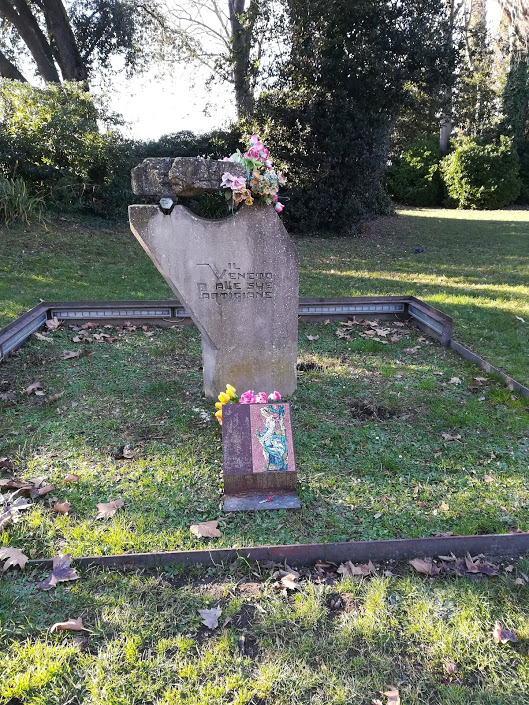
(For some reason this post registers as having been published several days ago, but it has yet to appear in the world at large. Clearly it was intended to precede the post about the women themselves, but here we are. I am attempting to publish this now.)
Anyone who has walked through the Giardini has almost certainly seen this ruin. As much as any fragmented Greek temple or scattered Etruscan fort, this chunk of cement represents a number of stories: Political, social, artistic, all of which are, lest we forget, human.
The story of the now-invisible monument is made of people and events stretching from World War 2 till the 1960s; it concludes in 1969 with the addendum of the contorted, algae-covered bronze woman perpetually drowning in the water just beyond. The algae-covered woman is fairly easy to interpret, whether you happen to like her or not, but the mute chunk of cement just stands there like some prehistoric stele.
This post will be about the monuments, and the following post will be about who they represent, much of which has faded by now into the middle and far distance in the general memory (spoiler alert: They represent the Italian women who fought in the Resistance during World War 2).
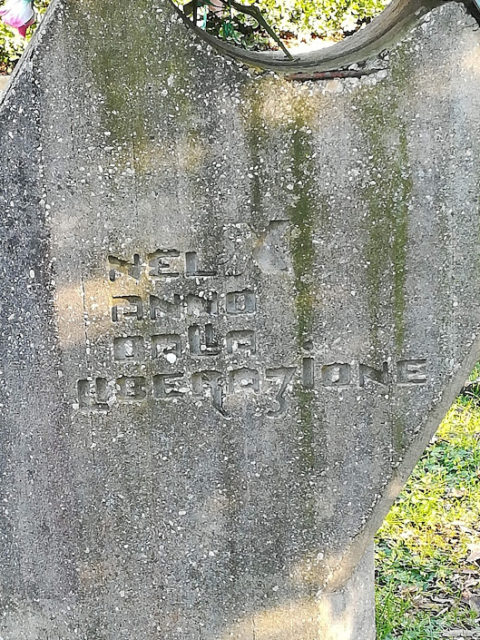
Venice was occupied by the German army from September 8, 1943 till April 28, 1945; there were 17 Nazi command posts in the city. And, as in the rest of Italy, resistance movements flourished. There are plaques on a good many Venetian streets to the memory of male partisans who were caught and executed, victims of the “German lead” (bullets). But the dramatic and crucial participation of the women of the Veneto region is officially recognized only in the Giardini.

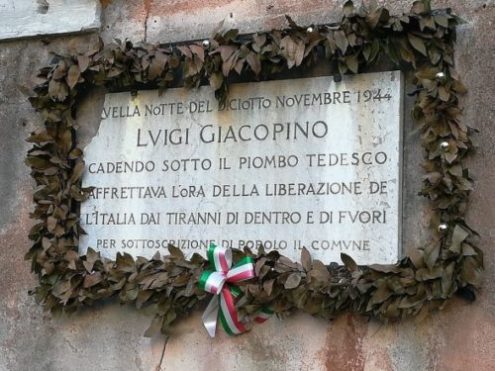
Let me say at the outset that I do not represent myself as an expert on Italian social and political evolution of any epoch; it is fiendishly complex, and what we don’t know will always be more than what we do. Added to this is the inevitable (I guess it’s inevitable) gloss of romance that is so easy to spread across the dauntless souls, men and women, who undertook terrifying risks and, when things went wrong, faced hideous torture and death.
The women who aided the Resistance in myriad ways worked — obviously — as secretly as possible, so it was a great thing when it was decided to commemorate their toil, resourcefulness, determination, and overall courage and grit. The result was a statue in painted majolica by sculptor Leoncillo Leonardi. This work was installed atop a cement pedestal designed by Carlo Scarpa, the renowned Venetian architect.
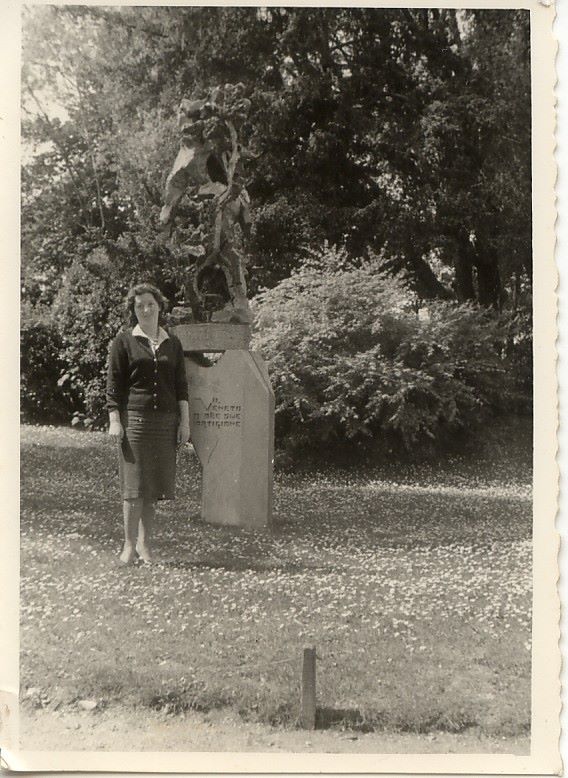
This statue had a fairly short life and, not unlike some of the women it celebrated, it met a violent end. On the night of July 27, 1961, a neo-fascist group set off a bomb that blew it to bits. The pedestal survived, though I don’t know if that was merely by chance.
The story begins in 1954, when the Institute for the History of the Resistance of the Three Venices (or Triveneto, the regions of Venezia Euganea, Venezia Giulia and Venezia Tridentina) decided to dedicate a memorial to all the women of the three regions who had participated in the Resistance, some of whom had also posthumously been awarded the Gold Medal for Military Valor for their actions and, too often, ultimate sacrifice.
The plan was to unveil the monument in 1955 to mark the tenth anniversary of the end of World War 2. This was to be the first monument in Italy, and in Europe, commemorating the women partisans. (There have since been a few others.) To appreciate this decision, one should know that after the war the women were typically described as having “contributed” to the partisan struggle, and not as active participants sharing the risks and hardships as much as the men. (See the following post.)
Leoncillo Leonardi was chosen for the commission, a sculptor and former partisan known for having already created monuments to other civilian victims of the Resistance. He chose to work in ceramic, his favorite medium, and the vividly-colored result did not meet with universal enthusiasm even though the neo-Cubist style was a nice poke in the eye to the Fascist government which had forbidden it.

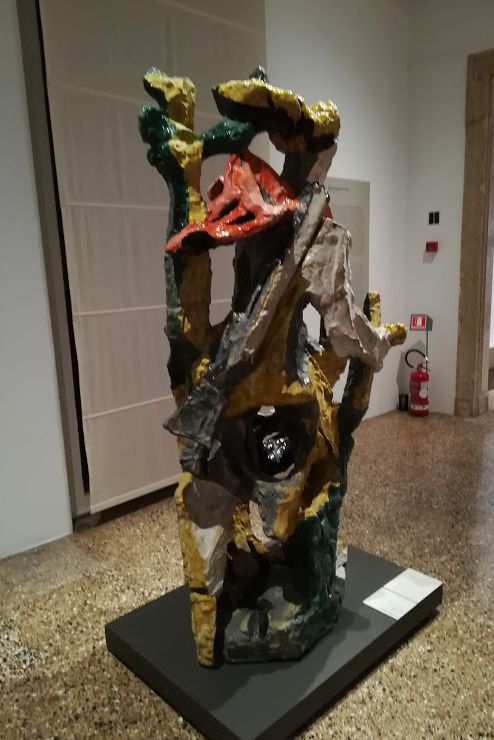
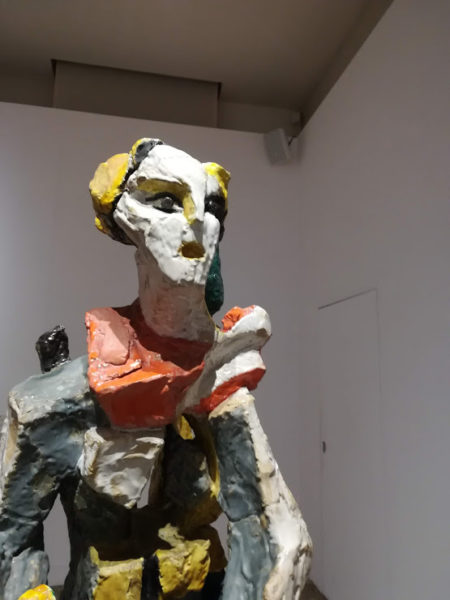

After the 1.5 kilos of explosives (one source says dynamite, another says TNT) pulverized the statue, the enraged Venetians staged protests against what was universally seen as neo-Fascist aggression. What pieces remained were gathered up and dumped in a pile with other trash and detritus behind the city’s “Serra,” or greenhouse, which was itself neglected over time till it reached a state of impressive deterioration. The fate of the fragments was forgotten for some 50 years, but when the Serra underwent a major restoration a few years ago, the garbage collectors carting the debris away discovered the bits of the statue. The largest and most important piece was the chest and head of the woman (the majolica layer of the face had been obliterated by the blast), an arm with a hand, and a number of other pieces, though the lower part of the statue is essentially gone forever.
The concrete pedestal had been recovered (I lack details here) in 2003 and set upright again by Roberto Benvenuti, the supervising architect. My sources say that the pieces were given to a restorer to be reassembled in some way, but there the trail goes cold.
To return to 1961: In the aftermath of the attack, a new committee was formed to commission another statue. Why didn’t they just install the original red-kerchiefed woman? There seem to be two reasons. One, apparently nobody ever liked it. Down deep, people felt it was just too different — not so much for the militant character of the woman as for its exceptional modernity (read: Cubist colored clay is just too weird). It must have been a blow to Leoncillo, not only to see his statue exploded, but not to be asked to make a new one (he died in 1968, seven years after the event).
The second reason for a new work, however, appears to have been a radical change in viewpoint toward the women partisans themselves. Even as plaques and street-names in their honor were being put up around the Veneto, many of these women were no longer seen in their triumphant aspect. Reflecting this revision, the new statue (in more-traditional bronze instead of ceramic) would represent, not the resolute combatant, but the martyred victim. This new statue was as full of feeling as the first, but it was a different feeling, focused on sacrifice and suffering.
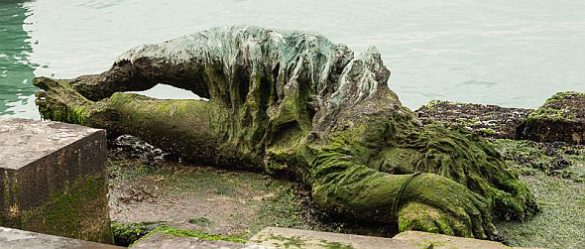
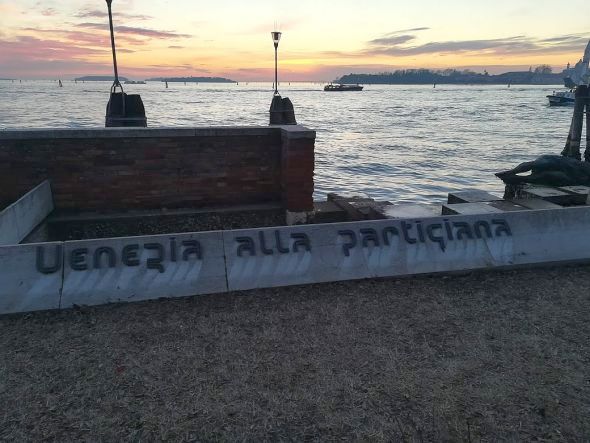
There were undoubtedly as many political as aesthetic reasons for this change, and I cannot plumb those depths here. I merely note, as one journalist put it, that by 1969 the city “preferred to convey a different image of the woman in war. What’s striking is the willingness to substitute for a strong image, alive, of a woman who reacts and resists, a more traditional one, of a woman defeated by war and not even easily identifiable as a partisan.” In the ten years separating the two statues, the image of the dynamic woman who fought had regressed, in a way, to that of the tragic woman who was courageous but who just “helped” the men.
The following post is dedicated to the women themselves.
